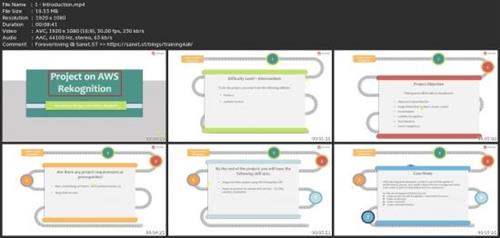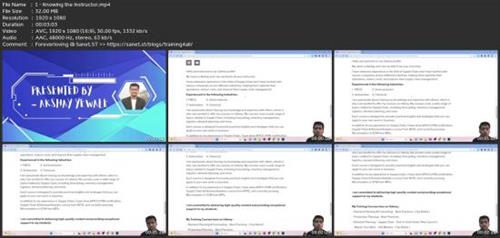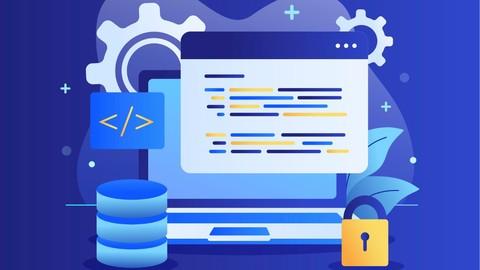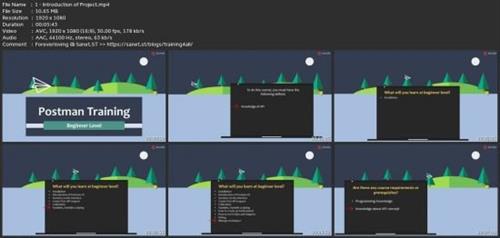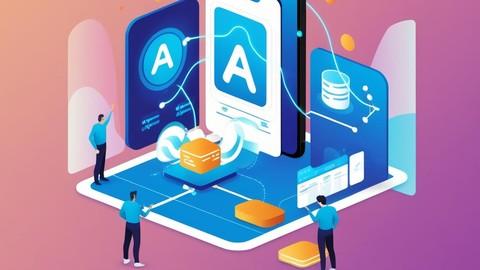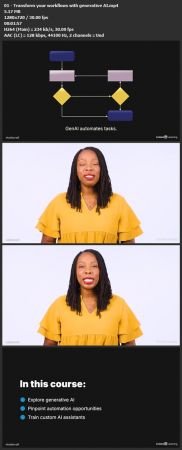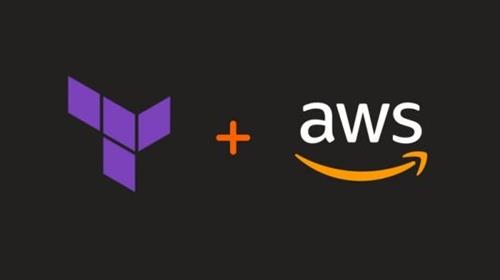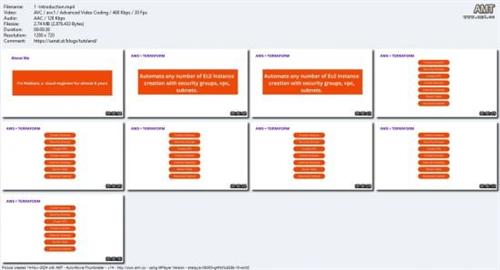Amazon Quicksight: Dashboard Creation & Data Visualization
Published 11/2024
MP4 | Video: h264, 1920x1080 | Audio: AAC, 44.1 KHz
Language: English | Size: 1.14 GB | Duration: 3h 38m
Transform your data into powerful insights with AWS QuickSight - learn to create interactive dashboards, visualizations.
What you'll learn
Master the fundamentals of AWS QuickSight for data visualization.
Create interactive dashboards and multi-sheet reports.
Build dynamic charts, graphs, and tables with various customization options.
Use advanced features like conditional formatting and themes.
Develop real-world projects, including a comprehensive COVID-19 dashboard.
Gain insights into best practices for data analysis and business intelligence.
Requirements
Basic knowledge of data analytics and visualization.
Familiarity with Excel or other BI tools is beneficial but not mandatory.
An active AWS account (free tier available) for hands-on practice.
No prior experience with AWS QuickSight is required.
Description
Course Introduction:Unlock the full potential of your data with AWS QuickSight, Amazon's powerful business intelligence tool. This course is designed to guide you through the complete process of data visualization and dashboard creation using AWS QuickSight. You'll learn how to build interactive dashboards, visualize data with various chart types, and use advanced features like conditional formatting, themes, and multi-sheet reports. With hands-on projects, including a real-world COVID-19 dashboard, you'll gain practical experience that can be applied to any industry or data source. Whether you're a data analyst, business intelligence professional, or simply someone looking to enhance your data skills, this course has everything you need to succeed.Section 1: AWS QuickSight - Creating DashboardsIn this section, you'll dive into the fundamentals of AWS QuickSight, starting with an introduction to the tool and its features. You'll explore why AWS QuickSight stands out among other BI tools, and how to set up datasets for analysis. We'll guide you through adding visual elements like tree maps, line graphs, and various charts. You'll learn to use themes, create multiple sheets, apply conditional formatting, and ultimately design dynamic dashboards. By the end of this section, you'll be able to create comprehensive dashboards tailored to your business needs.Key Lectures Include:Features of AWS QuickSightAdding and Visualizing DatasetsCreating Tree Maps, Line Graphs, and ChartsUsing Themes and Conditional FormattingDesigning Interactive DashboardsSection 2: Project on AWS QuickSight - Creating a COVID-19 DashboardThis project-based section takes you through a complete case study on building a COVID-19 dashboard using AWS QuickSight. You'll start by setting up the AWS Management Console, importing datasets, and applying filters to analyze the data effectively. We will explore various visualizations like line graphs, charts, and tables to represent COVID-19 trends. You'll also learn how to utilize multiple sheets, conditional formatting, and customize dashboard themes. The project concludes with step-by-step guidance on creating and refining your dashboard, providing hands-on experience that you can showcase in your portfolio.Key Lectures Include:AWS Management Console SetupBuilding Visualizations for COVID-19 DataCreating Multi-Sheet Reports and DashboardsApplying Conditional Formatting for Enhanced InsightsFinalizing and Presenting the COVID-19 DashboardCourse Conclusion:By the end of this course, you will have a thorough understanding of AWS QuickSight and its capabilities in creating interactive dashboards and powerful data visualizations. You'll not only learn the technical skills required to use QuickSight effectively but also gain hands-on experience through projects that demonstrate how to turn raw data into actionable insights. This course is perfect for anyone looking to elevate their data visualization skills and leverage the power of AWS for business intelligence.
Overview
Section 1: AWS Quicksight-Creating Dashboard
Lecture 1 Introduction
Lecture 2 AWS Quick Sight
Lecture 3 Why Aws - Quick Sight
Lecture 4 Features of AWS QS
Lecture 5 Demo- How to Add Dataset
Lecture 6 Adding Visulize
Lecture 7 Adding Visulize Continue
Lecture 8 Tree Map Visulize
Lecture 9 Line Graph
Lecture 10 Use Charts
Lecture 11 Multiple Sheets
Lecture 12 Themes
Lecture 13 Types of Tables
Lecture 14 Conditional Formating
Lecture 15 Create a Dashboard
Lecture 16 Different Dashboard Format
Lecture 17 Conclusion
Section 2: Project on AWS Quicksight: Creating a Covid19 Dashboard
Lecture 18 Introduction to Project
Lecture 19 AWS Management Console
Lecture 20 Analysis
Lecture 21 Feature of Quilk Sight
Lecture 22 Dataset
Lecture 23 Fields List
Lecture 24 Edit Filter
Lecture 25 Line Graph Visualize
Lecture 26 3 Types of Charts Visual
Lecture 27 Types of Table Visualize
Lecture 28 Conditional Formatting
Lecture 29 Multiple Sheets
Lecture 30 How to Create Dashboard
Lecture 31 How to Create Dashboard Continue
Lecture 32 How to use Themes
Lecture 33 Creating Dashboard
Lecture 34 Creating Dashboard Continue
Lecture 35 Conclusion
Data Analysts looking to expand their skills in business intelligence and visualization.,Business Intelligence Professionals interested in leveraging AWS QuickSight for interactive reporting.,Data Enthusiasts eager to learn a new tool for turning data into actionable insights.,Project Managers and Business Users who want to create data-driven dashboards for decision-making.,Students and Tech Enthusiasts looking to build a portfolio in data analytics and BI.
Screenshots
Say "Thank You"
rapidgator.net:
[Only registered and activated users can see links. ]
[Only registered and activated users can see links. ]

 Our Live Cams
Our Live Cams


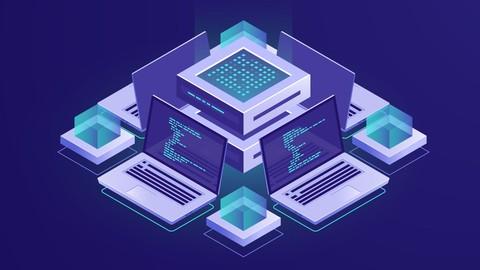
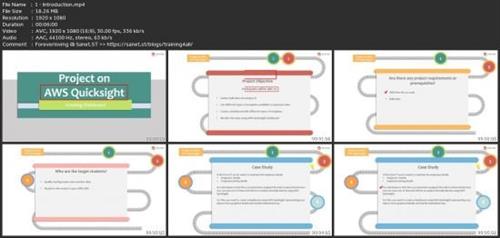

 Reply With Quote
Reply With Quote
